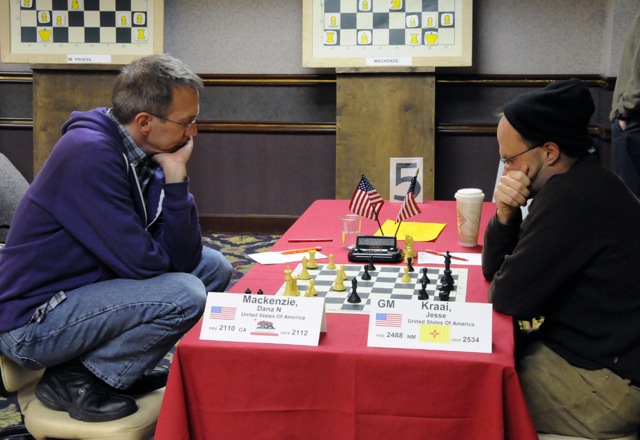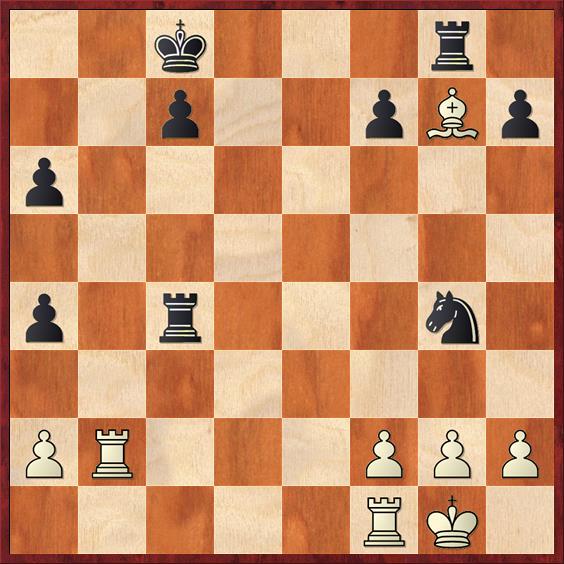A couple weeks ago I got a really cool surprise in my e-mail. A chess player named Frank Brown, whom I didn’t know previously, sent me a photograph that he had taken in 2009, when I played against grandmaster Jesse Kraai on one of the top boards at the Western States Open in Reno.
I like the photo because, first of all, it conveys really well the intense concentration of both sides. It also shows me in a fairly characteristic pose. I sometimes sit this way, with my feet on the chair, because it gives me the feeling of being able to see the board and concentrate better.
I acknowledge that this is not considered a very grown-up way to sit. Salman Azhar, who used to direct tournaments in the Bay Area before he moved back to North Carolina, once told me that he would tell kids in the scholastic tournaments not to put their feet on the chairs, but it was difficult to get them to obey after they saw me doing it! And Kay, my wife, says I’m “sitting like a monkey.” However, if this is my one behavioral quirk while playing chess, then so be it. (I really don’t do it all that often. Maybe once or twice a game at most, and in many games I don’t do it at all.)
Some of you might be curious about what was happening on the chessboard at the moment this photo was taken. So, let me show you the game!
Dana Mackenzie – GM Jesse Kraai
French Defense
1. e4 e6 2. d4? d5 3. ed ed
Let me explain the question mark on move two. For most of the past 30 years I have played the Two Knights Variation, 2. Nf3 d5 3. Nc3, against the French. I didn’t play it against Jesse for two reasons. First, I knew he had recently won a nice game against Bryan Smith in that variation, in a game he had lectured on for ChessLecture. Second, I was in a phase of trying to play more “solidly” in the opening, and thought I would try the Exchange Variation. Unfortunately, the people I tried it against were both grandmasters — Vinay Bhat and Jesse Kraai — and I got smoked both times.
I think that this points out an important rule when you’re facing grandmasters: Play what you know. There’s a tendency to think that GMs are omniscient and know your lines better than you do. But if you play some variation that you aren’t really familiar with, you’re handing them a victory before the game even gets going.
4. Nf3 Nc6 5. Bb5 Bd6 6. c4 dc 7. d5 a6 8. Ba4 b5 9. dc ba
Now I play a “TN” that’s not very good. It was not a prepared variation; I was making everything up at the board.
10. Qd4?! …
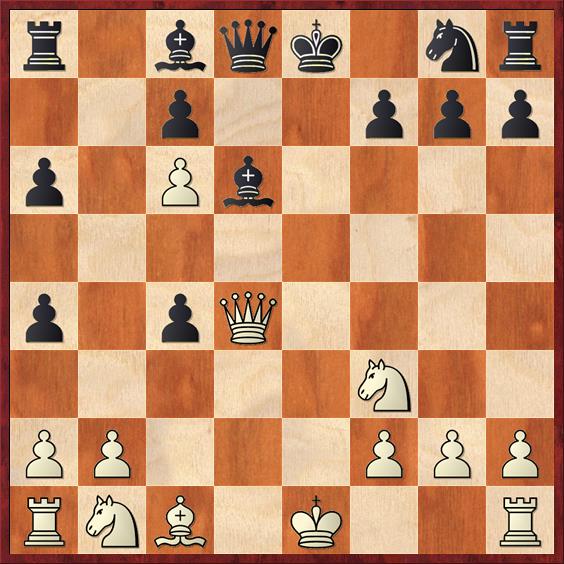 Position after 10. Qd4. Black to move.
Position after 10. Qd4. Black to move.
FEN: r1bqk1nr/2p2ppp/p1Pb4/8/p1pQ4/5N2/PP3PPP/RNB1K2R b KQkq – 0 10
According to ChessBase, this move has never been played! There’s a simple reason. With 10. Qxa4 White wins back the pawn; with 10. Qd4 he doesn’t. My attitude during the game was, “Well, his pawns are cripples and I can surely pick up one of the doubled a-pawns any time I want.”
The trouble with this reasoning, as Jesse pointed out after the game, is that as long as the a4 pawn remains on the board, it is an extra pawn. And there are positions where that pawn can make a difference, even though it is doubled and weak. Not only that, it will take White two tempi at least, maybe even more, to actually get around to winning it. Black can use those two tempi to improve his position elsewhere on the board.
This was my one opportunity to take back the pawn in a way that doesn’t require any additional moves.
That being said, I think that 10. Qd4 is not a completely awful move. It does induce a trade of queens and it is a halfway reasonable thing to play if, as in this game, White would be satisfied to hold his higher-rated opponent to a draw.
10. … Bb4+ 11. Nc3?! …
Actually, I think that this move may be worse than the previous one! 11. Bd2 would show more fighting spirit. If 11. … Qe7+ 12. Kd1 Nf6 13. Qxc4 Black faces some issues of his own, like what to do about Re1, and I’m not sure if White’s king is really all that unsafe on d1. Alternatively, if 11. … Qxd4 12. Nxd4 Bxd2+ 13. Kxd2! White is doing really well.
Again I feel as if I was beating myself psychologically. Against a grandmaster I was too focused on trying to play “correctly” instead of showing some fighting spirit with a move like 12. Kd1.
11. … Qxd4 12. Nxd4 Bg4 13. Nc2 Ba5 14. O-O O-O-O 15. Ne3 Bxc3 16. bc …
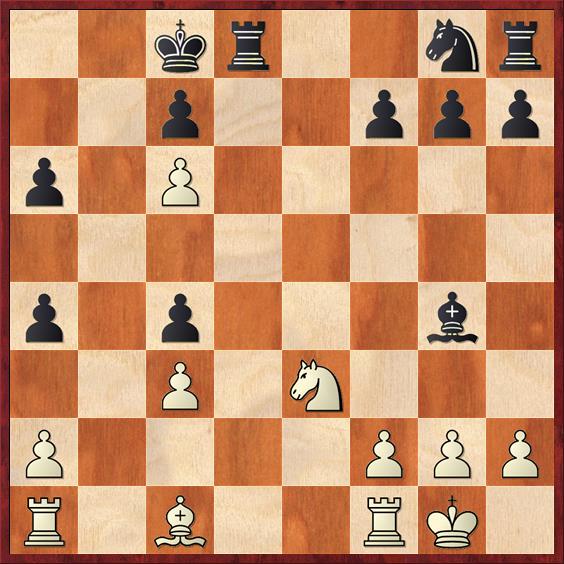 Position after 16. bc. Black to move.
Position after 16. bc. Black to move.
FEN: 2kr2nr/2p2ppp/p1P5/8/p1p3b1/2P1N3/P4PPP/R1B2RK1 b – – 0 16
And here we are at the position in the photo! 16. Nxg4 was a possibility, but again I was trying to play simple, straightforward chess.
This is actually a very important position for this game and probably a good learning opportunity, because the move Jesse played was not what I expected. What would you do? Would you retreat the bishop to h5 or e6? Harass my rook with Be2?
16. … Nf6!
A move like this is where Jesse shows his grandmaster caliber. I’ve already spoken about how I was trying to play “correct” chess. By contrast, with his last two moves Jesse has completely turned normal chess principles upside down. He had the two bishops — so what did he do with them? He traded them (or at least offered to trade them) for two knights!
I think that the great majority of “ordinary” chess players (under 2200, maybe even under 2400) would almost automatically play 16. … Be2 here. The bishop seems to have a great outpost after 17. Re1 Bd3, controlling the b1 square, defending the c-pawn. White’s pieces seem really uncoordinated. So why didn’t Jesse go for this line? Well, part of it may be that he doesn’t want to be saddled with opposite-color bishops. But that’s not the main reason. I think that he sees the bishop on d3 as a piece that’s going nowhere, and that actually gets in the way of one of his attackers, the rook on d8. I think he also sees this as two wasted moves, which allow me to activate my pieces before his, say with 18. Ba3 Nf6 19. Be7! Re8 20. Bxf3 gf. In this position Black’s messed-up pawn formation and his “tall pawn” at d3 mean he will have a hard time winning, even with an extra pawn.
By contrast, with 16. … Nf6 Black completes his development. He tells White, “Go ahead, take my bishop,” because he anticipates that the knight will go from g4 to e5 to d3 and become a dominating piece. When evaluating piece trades, you shouldn’t think so much about the pieces that are coming off the board — you should think about the pieces that are going to be left. By trading off all the minor pieces except my dark-squared bishop, Jesse has made it next to impossible for me to take advantage of his queenside pawns, which all sit on light squares.
I decided not to take, and tried to take advantage of Black’s decision not to put his bishop on the b1-h7 diagonal.
17. Rb1 Rd6 18. Nxc4 Rxc6 19. Ne5 Bf5?
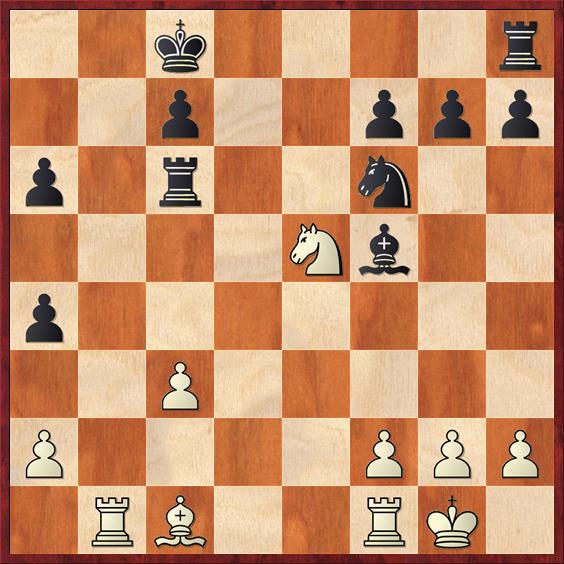 Position after 19. … Bf5. White to move.
Position after 19. … Bf5. White to move.
FEN: 2k4r/2p2ppp/p1r2n2/4Nb2/p7/2P5/P4PPP/1RB2RK1 w – – 0 20
This brings me to my second lesson for playing against grandmasters: you must take advantage of their mistakes. Grandmasters are human, and they do make mistakes occasionally, especially in tricky tactical positions. In many games they don’t make any mistakes at all. At best you can hope for one mistake in a game. You must find that mistake and capitalize on it. Otherwise you have no chance of winning.
Here Jesse gave me one chance, not to win but at least to reach a defensible endgame. After the game he said that he should have just taken my pawn: 19. … Rxc3! The main point is that if I try to win back the pawn with 20. Nxg4 Nxg4 21. Bb2 Rc2 22. Bxg7 Rg8 23. Rb2? (23. Bd4 is a better try), he will play 23. … Rc4 and my bishop is trapped! This position is so surprising that it deserves a diagram:
FEN: 2k3r1/2p2pBp/p7/8/p1r3n1/8/PR3PPP/5RK1 w – – 0 24
Amazing! Each of Black’s pieces takes two or three squares away from White’s bishop, and White’s “traitor rook” at b2 takes away the rest. It’s true that with 24. h3 or 24. f3 White can limit the damage to a pawn, but the two-pawns up rook endgame looks as if it’s probably won for Black.
Now we get to what I missed. What is White’s best continuation in the third diagrammed position?
Continuing my superficial play, I played 20. Rb8+?, a wannabe tactical shot that doesn’t accomplish anything. After 20. Kxb8 21. Nxc6+ Kb7 22. Nd4 Black’s advantage may not look like much, but actually it’s very significant. White’s knight has no place to be, Black’s rook will soon take over the only open file, White’s queenside pawns are just as weak as Black’s, and Black is still a pawn up. Those doubled a-pawns still count as two pawns. If Black is able to trade his a-pawn for one of White’s queenside pawns, he will be a “normal” pawn up and have a winning endgame. In fact, what happened after this was a debacle where Jesse won both of my queenside pawns as I futilely strove for counterplay: 22. … Bg6 23. Ba3 Re8 24. f4 Bd3 25. Rc1 Bc4 26. Rb1+ Kc8 27. Nc6 Bxa2 28. Rb8+ Kd7 29. Ne5+ Ke6 (I think I was in time pressure and hallucinated that I was actually winning Black’s rook on e8, forgetting that it was guarded by the knight) 30. Rb7 Nd5 31. g3 f6 32. Nf3 Kd7 33. Nd4 Nxc3 34. Kf2 Nd1+ 35. Kf1 Bc4+ 36. Kg1 Re1+ White resigns. Ecccch!
So, do you see what I missed in diagram 3? The correct idea was 20. Nxc6 Bxb1 21. Bh6! This move throws a huge monkey wrench into Black’s plans. Of course, 21. … Bxa2? would lose a piece after 22. Bxg7. Black has to take the bishop and wreck his kingside pawns: 21. … gh 22. Rxb1. Black still has the advantage, of course, but his pawn structure is so unbelievably awful that White should have some chances of saving the draw.
Ironically, I did see the Bh6! idea, but a move too late. After 20. Rb8+? Kxb8 21. Nxc6+ Kb7 22. Nd4 I saw that 22. … Bb1? would be met by 23. Bh6! Unfortunately, I somehow missed the idea of forcing the bishop to come to b1 a move earlier.
All in all, Jesse showed that grandmasters aren’t perfect, but I was way more imperfect than he was. He displayed some creative, out-of-the-box thinking with 16. … Nf6, and over the last 15 moves he transformed what looked like a slightly better position to a complete rout.
As for me, it was a thoroughly dispiriting game in which I tried to color by the numbers and instead made a mess. It’s a common way to lose: I played too meekly in the beginning and too ambitiously when the position was already coming undone. And I missed my one good chance at a tactical shot. So I can’t put this game on my “six memorable games” list, but it is still a relatively good game to learn from.
